Excuse me, but my bag hasn’t arrived,” I say to the fellow at Denpasar Airport’s lost baggage counter.
“Fill out this form,” he replies before pushing a piece of paper across the desk.
It’s just gone 10pm Bali time, or 1am Sydney time, and my gearbag containing my leathers, helmet, boots and everything I needed for the Pirelli DIABLO ROSSO IV Corsa tyre launch I’m attending in a few days’ time at Indonesia’s new Pertamina Mandalika International Street Circuit has been lost.

I hand my filled-out form back to the guy, who snatches it off me, asks me to sign another piece of paper and pushes 600,000 rupiah ($60) across to me and waves me away.
“You let me know if you find the bag,” he says and looks to the next person in line.
With no thanks to old mate, I eventually find out my bag’s on a different flight and with a different carrier, but at least it’s en route to Bali. Four hours later I’m finally reunited with my bag and, after an eye-opening drive to my accommodation, I arrive at 2am local time, hungry and sweaty in equal measure.

From start to finish my trip to Mandalika was quite an experience. From lost luggage and dodgy car rides to watching Alvaro Bautista clinch the 2022 WorldSBK Championship to lapping the Mandalika circuit on a clapped-out Ducati Multistrada – my trip to Indonesia had it all.
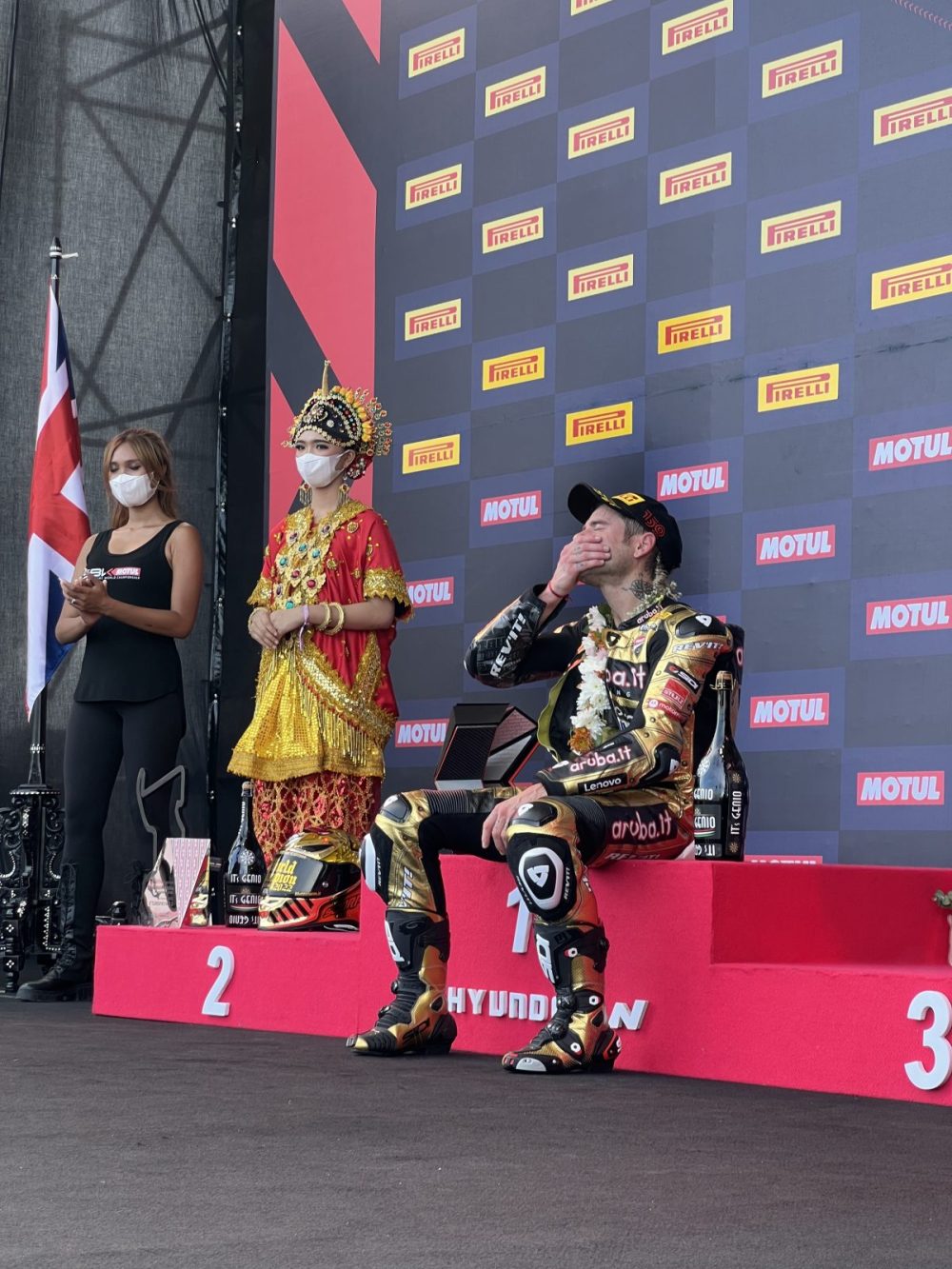
I was there as a guest of Pirelli, whose plan was to coincide a track launch of its new Diablo Rosso IV Corsa and Diablo Rosso IV tyres with the penultimate round of World Superbikes. Experience the races as a guest of the series’ major sponsor before being let loose on the grippy Mandalika circuit the following day after Bautista, Rea and Razgatlıoğlu had finished laying rubber on the freshly resurfaced layout.
There are a couple of different ways to get from Bali to the Island of Lombok. You can take a domestic flight, or you can go by ferry. I took what the locals refer to as the ‘fast boat’ which leaves from Padang Bai and takes around three hours to get to Lombok. The fast boat is very touristy, with an air-conditioned main deck and open top deck, both with music playing and staff selling bottles of icy cold Bintang to hot and sweaty tourists.
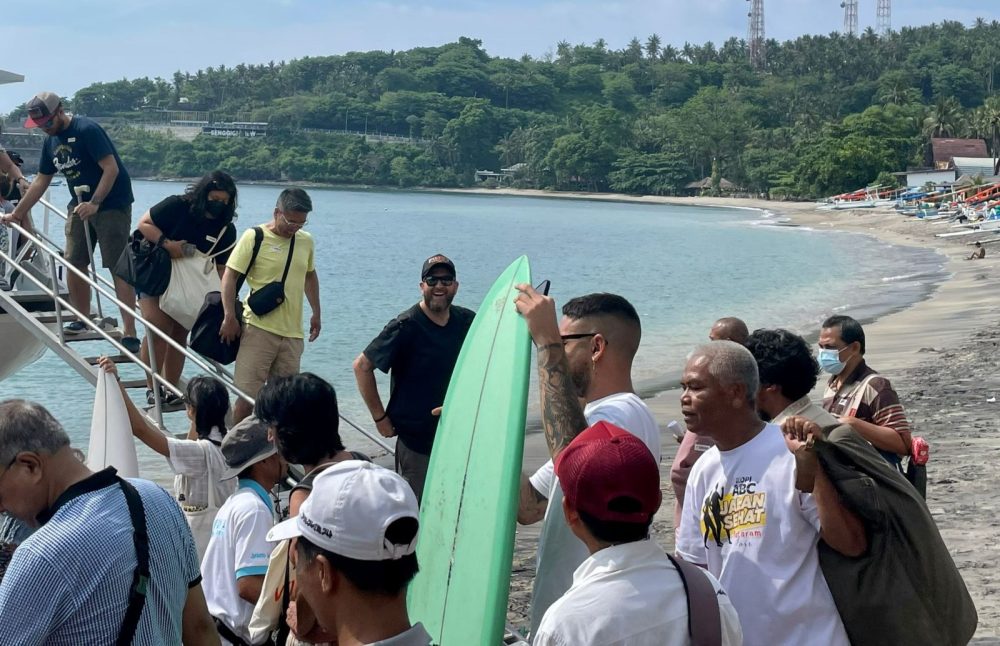
Onya, Alvaro
We arrived at the track early Sunday morning and kicked off our day with a tour of the international program feed and replay production rooms. These rooms are where the magic you see on TV is created and the scale of the operation is amazing. The rooms are filled with screens with rows of busy beavers going about the business of beaming every bit of action to the fans at home.
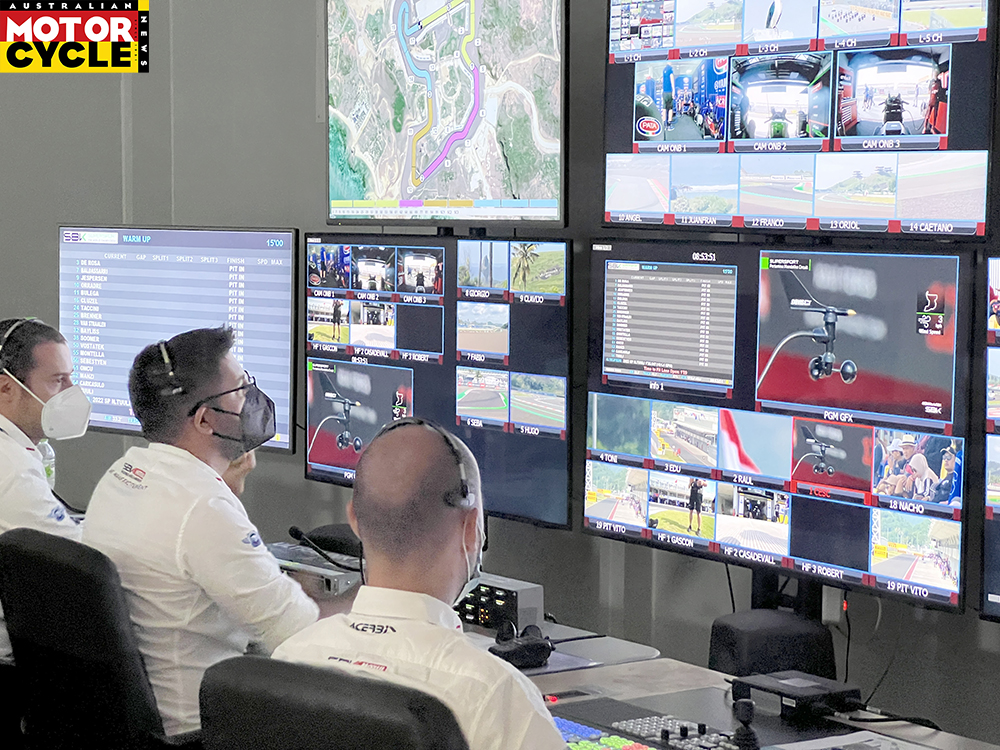
After making a dick of myself in front of the WorldSBK Mandalika sign in the most tourist of ways, I hit the pit garages, stopping to have a chat and fanboy photo with the legend that is Troy Bayliss and spending a further few minutes having a chat to Oli. And what a gentleman Oli is; despite readying himself to head out on track, he was laid back, open and an absolute pleasure to talk to.
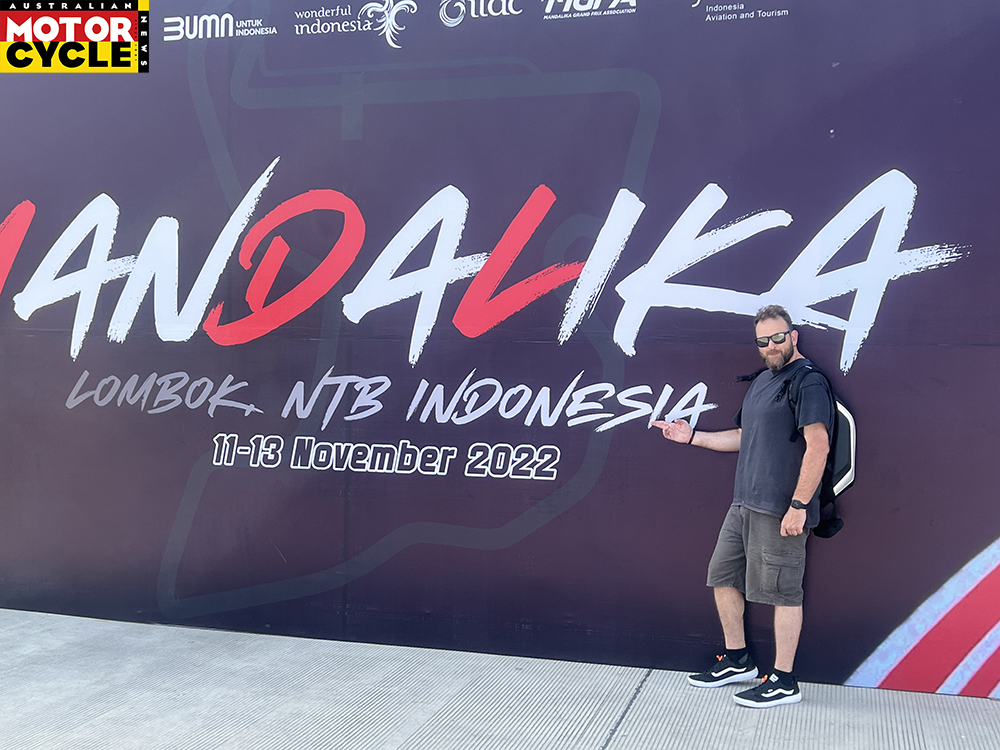
Pirelli had a corporate room where we could watch the action on screen, munch, drink and most importantly cool down in the air-conditioning. I stayed well away from the food table in the hope that I could zip my suit up the next day without a support crew and a hefty quantity of chain lube.

After bringing my core temperature down to levels more appropriate for the large mammal that I am, I headed off for a chat with Pirelli’s WorldSBK product manager, Lorenzo Pomone. Lorenzo showed us through the Pirelli tyre service area and the rows of climate-controlled shipping containers that hold the many hundreds of tyres that the field requires each race weekend.
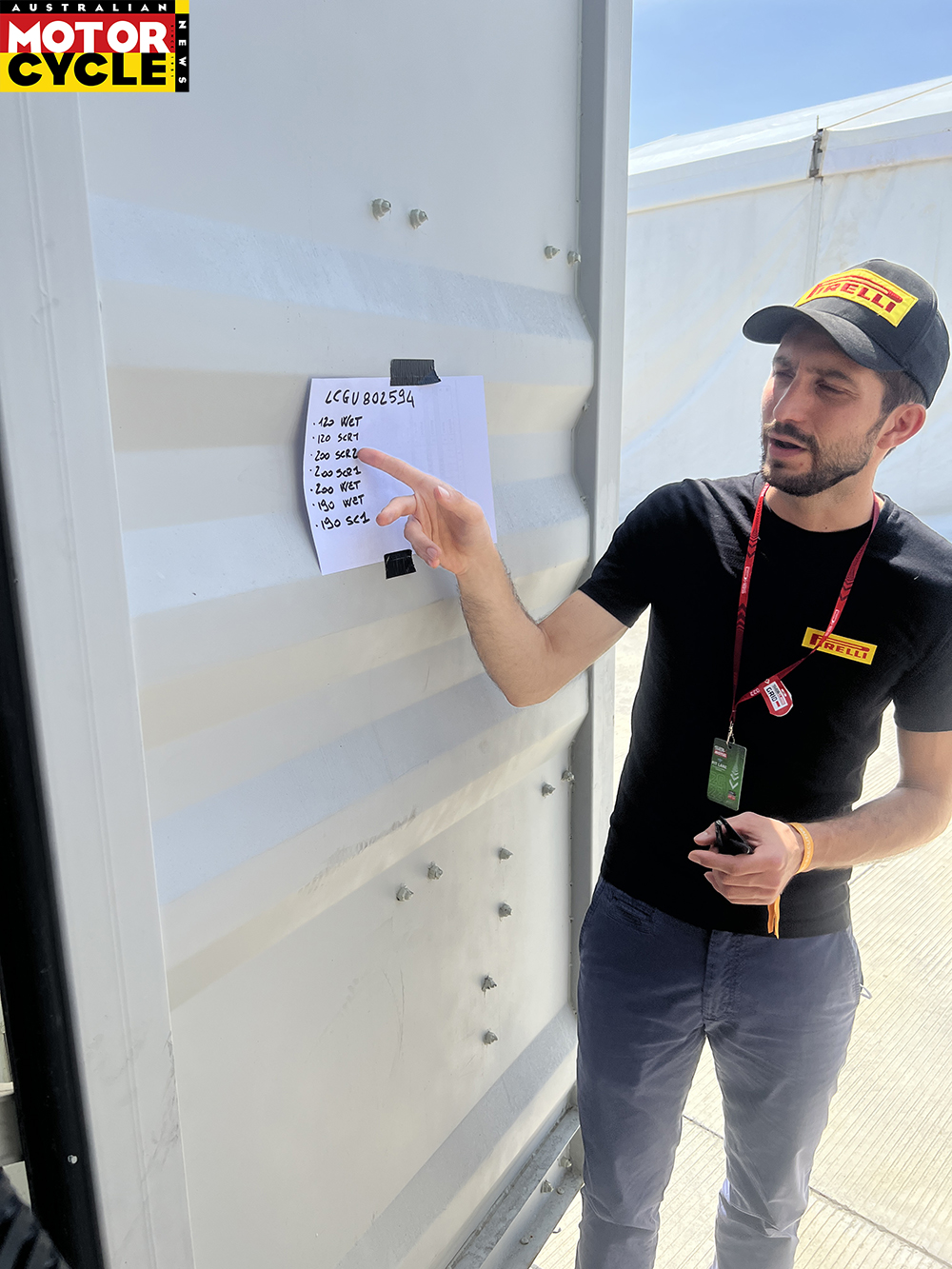
Each team has a designated Pirelli tech that assists and advises the team on the ideal tyre choice for each session or race.
The teams bring their rims to the service area where they are fitted by Pirelli techs ready for the next session. Once the tyres have been used, they are removed by the Pirelli techs and shipped back to Germany for analysis and disposal.
After chatting with more friendly and very wise Pirelli folk, I headed towards the grid – unbeknownst to me, Pirelli had organised a grid pass. I’m really talking ‘on the grid’, strolling along as Alvaro, Jonathan and Toprak sat on their bikes, race faces at the ready.
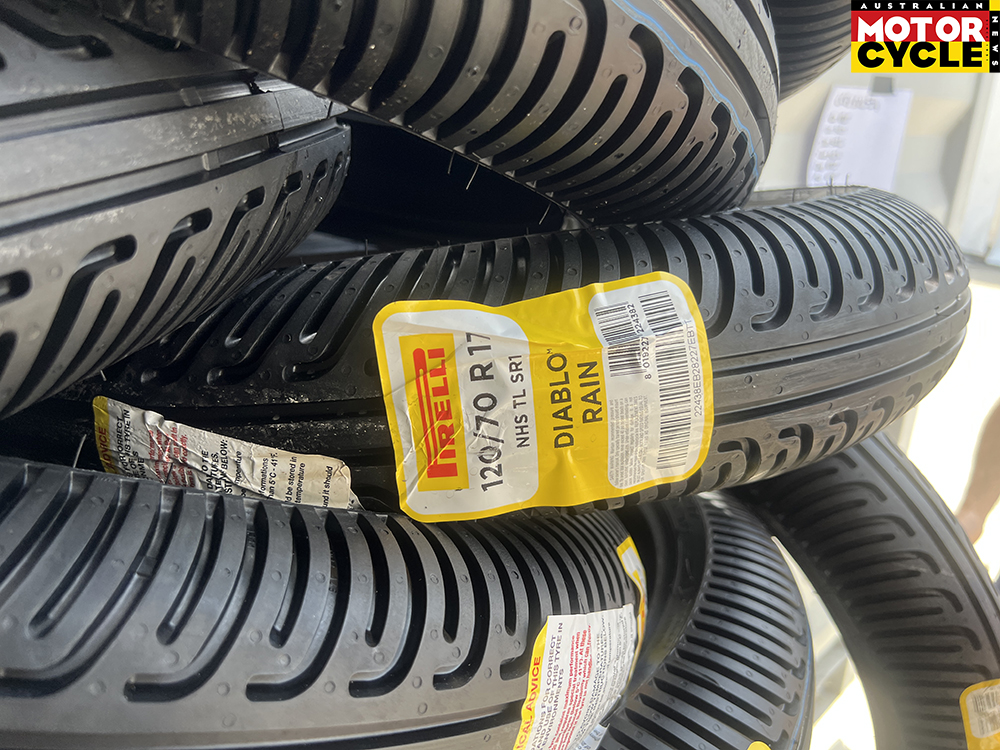
Apart from the interlopers like myself, the sheer volume of people milling, running and standing around with laptops, tools and myriad other bits and pieces the bikes and riders require is crazy. I’ve watched a million races and never taken notice of the goings on the grid just before the race starts.
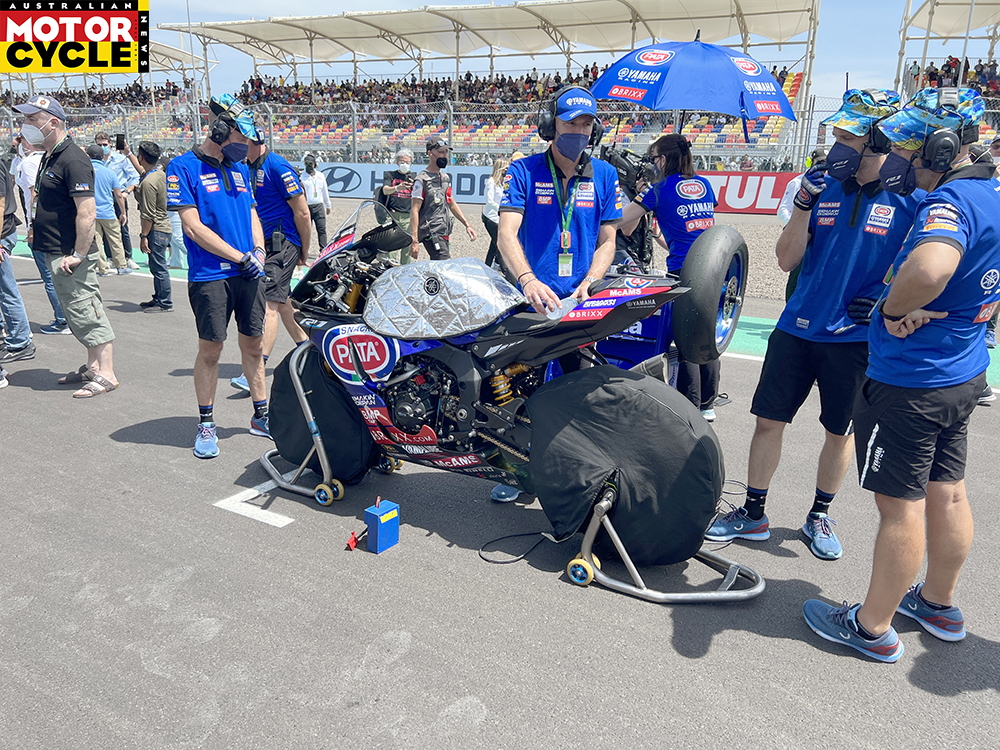
After the final race in which Bautista claimed the world title, I hit the podium area in full fan mode. Sweating as much as Alvaro and the boys were after their 90km race just standing in the humid 35-degree heat. Understandably so, Bautista looked both physically and emotionally exhausted as he sat slumped on the top step of the podium, before being joined by the whole Ducati team when things got a lot louder.

The facilities at the circuit make you realise just how agricultural Phillip Island is for an international circuit. Permanent grandstands, permanent toilets and plenty of undercover areas in case it rains or so you can hide from the relentless sun.
On the grandstand side of the main straight is the festival area filled with vendors selling various motorcycle-related trinkets. The festival area is not what we are used to – like no official WorldSBK merchandise to be found. In fact, the closest thing I could find to the Phillip Island event was a Honda stand with a bunch of small-capacity bikes and a marquee selling MotoGP merchandise.
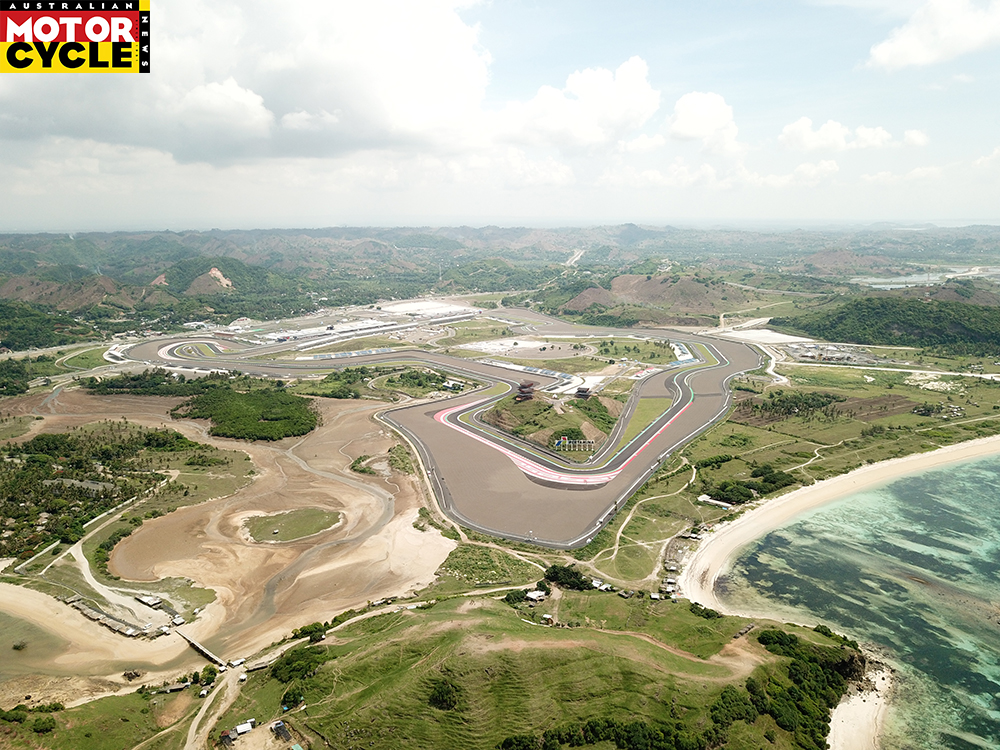
Testing time
I spent the first half of the Monday after the WorldSBK weekend testing Pirelli’s new Diablo Rosso IV Corsa on the Mandalika circuit. The circuit had been resurfaced just a month before and, while the WorldSBK boys had laid down a nice line of rubber, running offline was a slippery affair. It’s a relatively fast and flowing circuit and pretty easy to learn, and there’s plenty of runoff in case things do go wrong.
Lombok is a region made up mostly of small-capacity scooters, mopeds and step-throughs so Pirelli’s job of sourcing a bunch of large-capacity sportsbikes for the tyre test was a tough one. So tough, in fact, it had to resort to using customer bikes. I ended up on a well-used V-twin Ducati Multistrada – not the most ideal tool for a track test!
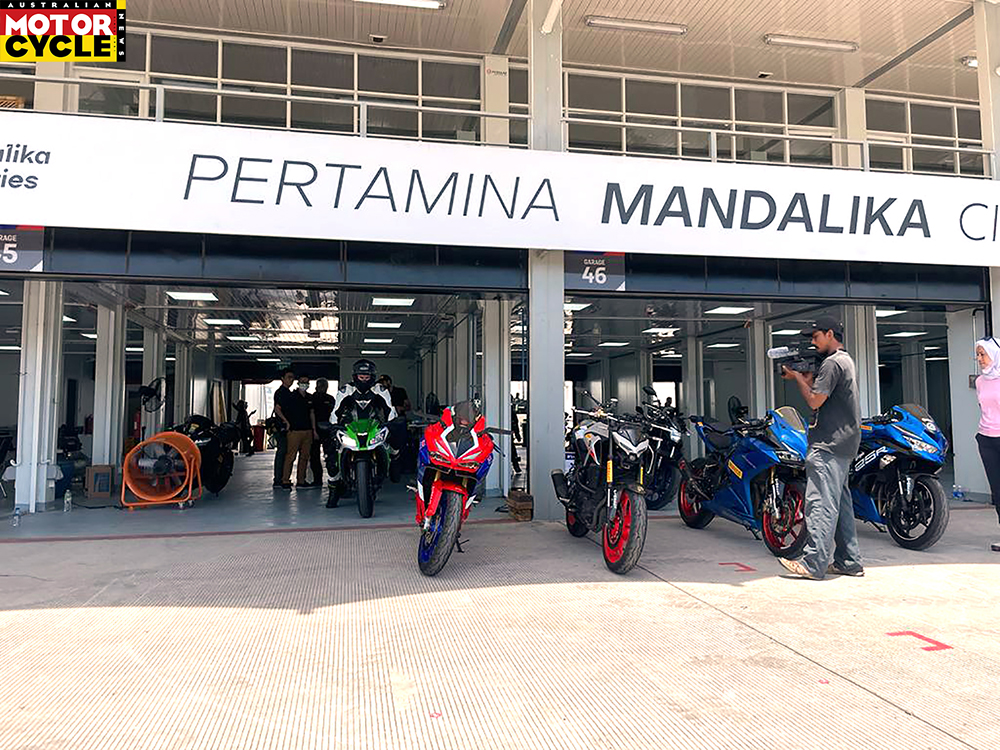
Before I left pitlane for my first session on the new hoops (see breakout) I was bombarded by requests from the owner and his family for photos. I was feeling very famous with a stiff side of imposter’s syndrome. The owner was so excited to see his beloved Multistrada ripping around a racetrack that all the brake cleaner in the world couldn’t have wiped the smile from his face.

Apart from the expense of doing a trackday which, according to the owner, would be beyond the means of many of the locals, Mandalika doesn’t offer trackdays at all. In fact, right now, the multi-million-dollar facility hosts MotoGP, WorldSBK and a very occasional domestic race, but the rest of the time it lays dormant.
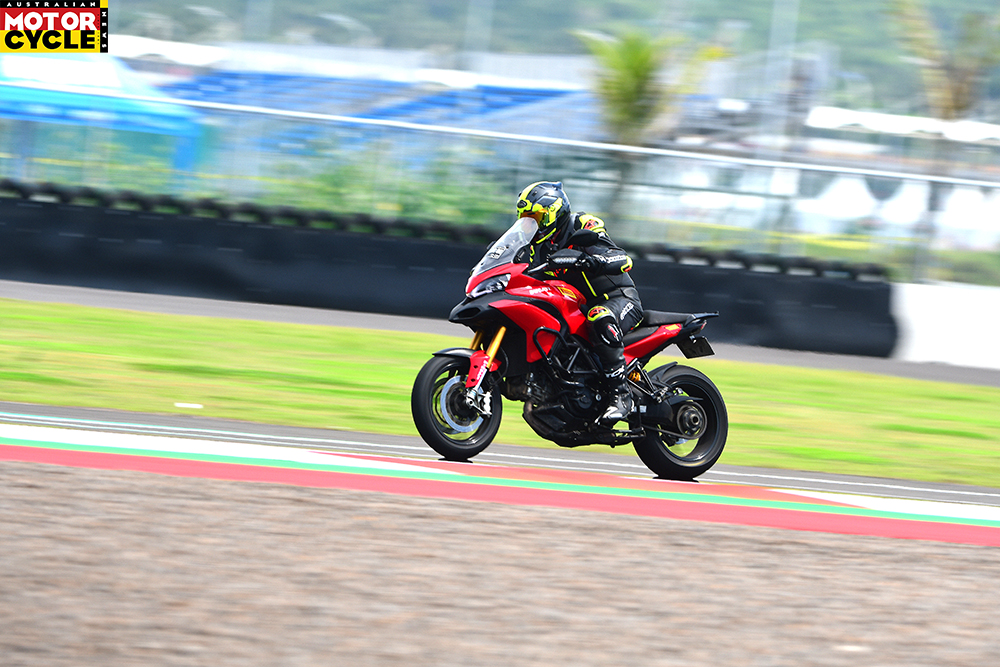
After the excitement of seeing the WorldSBK racers do their thing and the thrill of getting a crack around the flash new Mandalika circuit, it was time to slowly make our way back home.
And it turns out the bloke from Pirelli and I have a similar organisational style: it’s what I like to call ‘winging it’. And as we hadn’t yet made arrangements to get ourselves back to the island of Bali, we took the only option left – the slow boat.

So while the fast boat took 2.5 hours and was populated mainly with Australian and European tourists, the slow boat takes six hours, is used by locals and there was no air-conditioning or Bintang to speak of. We were the only tourists on board, so we were somewhat of a curiosity for the locals. The slow boat attracts more passengers than there are seats and pre-departure sellers make their way through the ferry selling flax mats so that you can take advantage of any spare deck space.
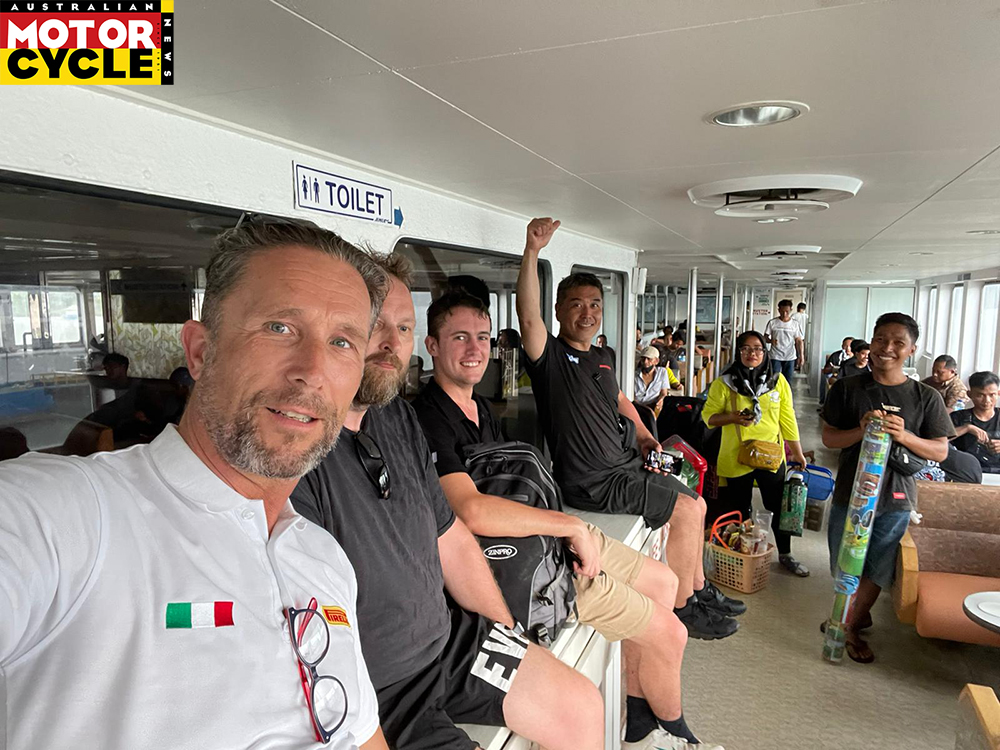
The slow boat was overcrowded, as hot as hell and topped off with overflowing toilets. I had managed to lose my thongs and I had absconded with a set of complimentary fluffy white slippers from the previous night’s accommodation to wear after my stint around the circuit. But between a couple of visits to the toilet and a thunderstorm, they were souvenirs that never made it home.
Barefoot and tired, we jagged a ride from the port to Bali’s main party town of Kuta. A local gentleman talked us into letting him drive the four of us 90 minutes to Kuta in what he said was a “very big car”. We agreed on 300,000 rupiah ($30) but after seeing the size and condition of the wreck that he called a car, we renegotiated to 200,000 rupiah ($20). The driver was very unimpressed and drove like a madman, flashing lights and blasting his horn continually, darting in and out of traffic in a rather enthusiastic manner. There was no air-conditioning in this rig, so all windows were down allowing us to take in the full olfactory sensation of the Bali night, which is a concoction of fumes, burning rubbish and the unique smell of the tropics.

After a trackday in 35-degree heat with humidity sitting around 90 percent, an interesting ferry ride and an exhilarating ride to Kuta, I rolled into the Hard Rock Hotel looking forward to a shower, a drink and hopefully some complimentary slippers.
If you’ve never been to Bali or Lombok before it’s an experience in itself. The crazy traffic, the sights, the smells – they are wonderful places to visit because despite being so close, they are so different and so in your face. Package that with a trip to see some of the best riders in the world doing their thing and it’s an experience you’ll never forget – I sure won’t.

Devilish hoops
The big advantage of Pirelli being the sole tyre supplier to the WorldSBK paddock is that the lessons learnt on track eventually trickle down to the tyres you and I can buy off the rack.

The Diablo Rosso IV Corsa sits above the Diablo IV Rosso in the Pirelli supersport tyre range and, according to Pirelli, is a tyre better suited to riders of hypersport machines who want both excellent dry-weather road-riding grip and/or an excellent trackday tyre. I’ve spent a fair bit of time on the Rosso III and Rosso III Corsa hoops and both tyres are firm favourites of mine for their fast warm-up time, grip and predictable behaviour.
Pirelli reckons the Rosso IV Corsa is a direct benefactor of the lessons learned in the WorldSBK paddock. Sharing tread compounds and carcass construction technology with the race tyres means the new Rosso Corsa has even better dry-weather grip, improved stability and better performance consistency across the life of the tyre. Pirelli says it all comes down to improved thermal management characteristics.
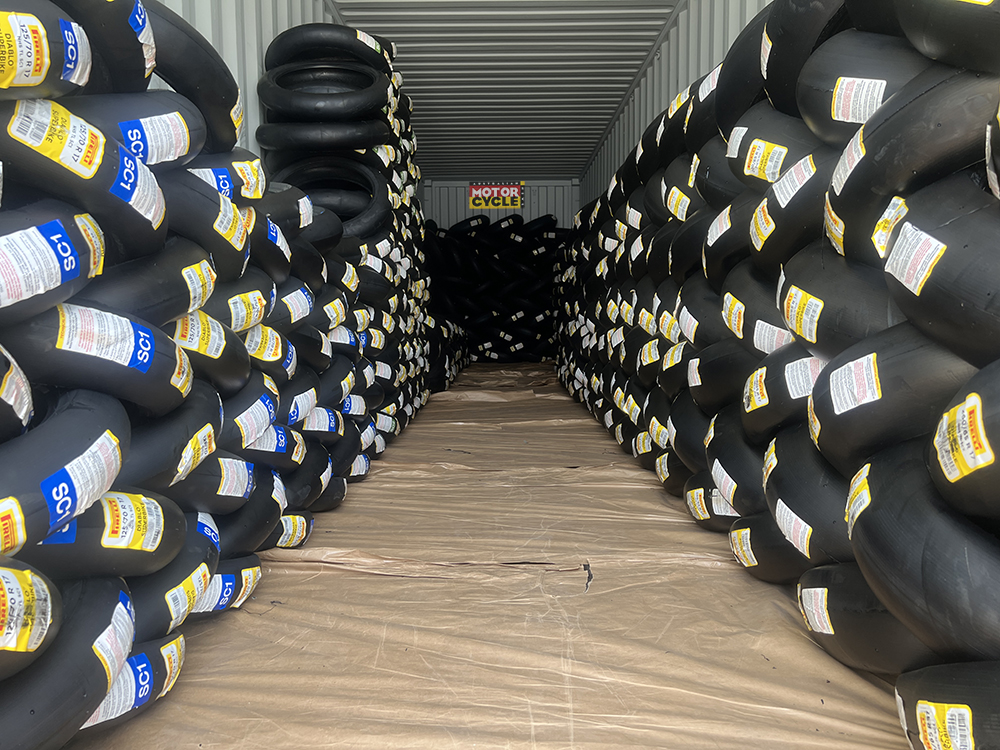
Despite having a very friendly owner, the not-so-well-maintained Ducati Multistrada I was assigned for the test had what I’d call ‘flogged-out’ suspension, a centrestand that wouldn’t stay up and a traction control system that no longer worked. So if you’re wondering why this tyre test lacks the detail you’re used to, there are three good reasons.

The Mandalika circuit is a relatively fast-flowing one with just a few corners that require heavy braking. But when you’re learning a circuit, you tend to rely on braking a bit more than on a circuit you’re familiar with; braking heavily and then punching out the other side, usually cursing yourself as you realise you could have carried far more corner speed.
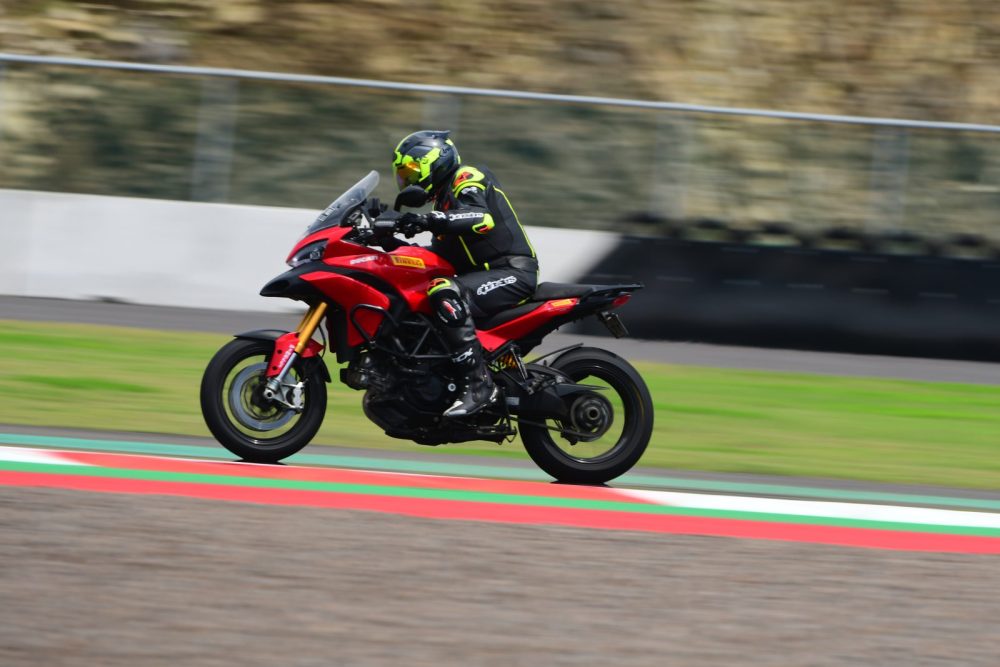
However, that heavier reliance on braking and grunting out of the corners highlighted two stand-out points of the Diablo Rosso IV Corsa: braking stability, edge grip, and predictability of that edge grip when exiting corners under hard acceleration.

Because of this particular Multistrada’s shortcomings, I really had to stand the bike on its nose going into corners and the Corsas were exceptionally good – so stable and so poised, even to the point where I’d become so cheeky with my braking that I locked the front and ran straight on and off the circuit. And that’s wonderful because I knew what was happening, I knew it was about to lock and the Pirelli allowed me to manage that and get away with it without hitting the deck.

Carrying less corner speed required the use of every kilowatt and newton-metre at the Multistrada’s disposal on exit, and the IVs where impeccable here, too. There was oodles of grip and, even on the few occasions when the rear did break loose, it was slow and predictable – no breaking away violently, just a nice progressive slide that makes you feel like you’re better than what you are.

As luck would have it, the Energica Ego I tested recently for an upcoming issue was fitted with near-new Diablo Rosso III Corsas which was good for a quick comparison to the IV I tested in Indonesia. Admittedly, the Energica is a heavy bike but so is Ducati’s Multistrada. Setup obviously has a lot to do with a bike’s front-end feel, but I had more confidence in the front-end on the IV at track speeds than I did on the III at road speeds.

There was more feedback and certainly a more stable feel. Sure, I’m comparing apples and oranges so read into that what you wish, but my seat-of-the-pants assessment is that Pirelli has made good improvements and builds further on the fine reputation the Diablo Rosso Corsa series has formed. It looks and feels like all those Superbike miles are doing their job.

Pirelli’s Diablo Rosso IV Corsas start at $269.95 for front sizes and $299.95 for rears.
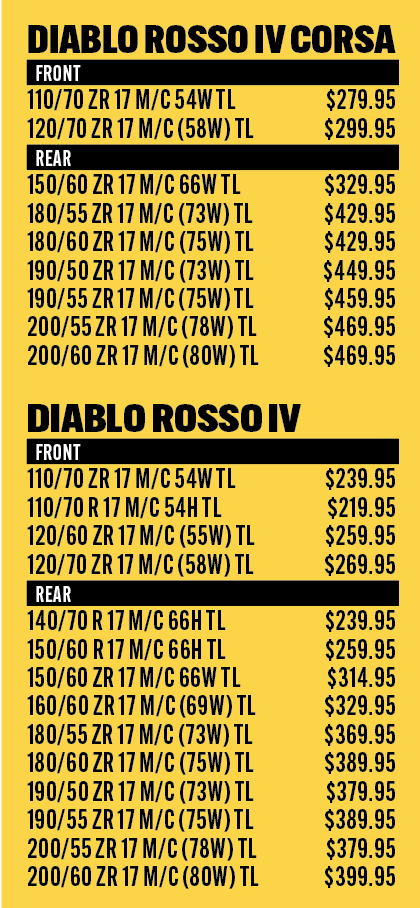
Visit www.pirellimoto.com.au for more information on the Pirelli range
TEST: PETE VORST PHOTOGRAPHY PV & PIRELLI